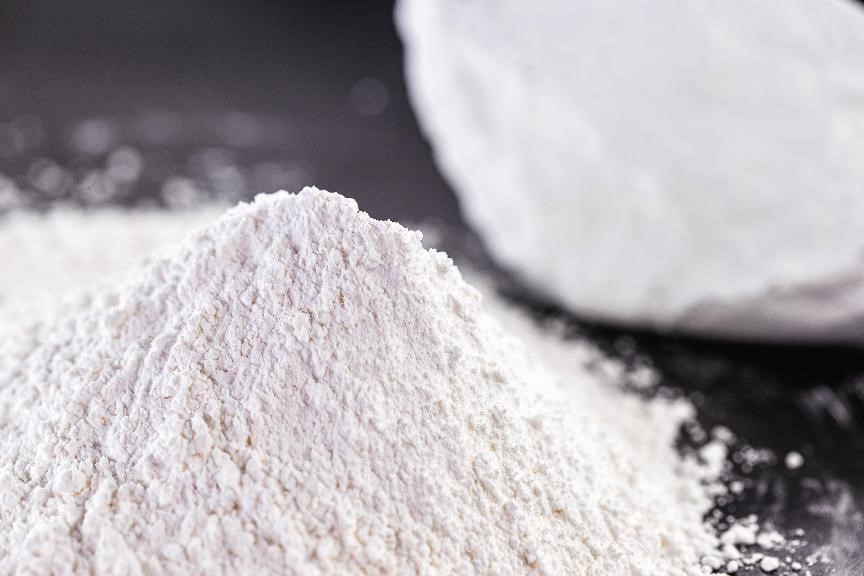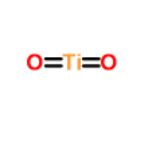


| Item | Index |
|---|---|
| Appearance | White powder |
| TiO2 content | 87.0% |
| Moisture | ≤0.9% |
| Bulk density (tamped) | 1.2g/cm³ |
| PH | 8.0 |
| Oil absorption | 22g/100g |
| Specific gravity | 3.9g/cm³ |
| Inorganic coating | Alumina; Silica |
| Organic treatment | Present |
| Key features: |
1)High opacity 2)Excellent dispersion 3)Low abrasivity |
| Recommended applications: |
1)Reverse printing inks 2)Printing inks for paper laminates 3)Matt paint |
| Packing | In 25KG /500KG /1000KG bag or as per customer’s requirement |
|---|---|
| Storage | This product should not be stored outside or exposed to temperature extremes or to moisture.
To ensure optimum performance, it is recommended that the product is used on a first in, first out basis from receipt of shipment. |
Tel: 0086-25-52397808
E-mail: info@titanium-dioxide.net


| Common Names | TITANIUM DIOXIDE | ||
|---|---|---|---|
| Structure |

|
||
| CAS No. | 13463-67-7 | Boiling Point (℃) | 2900 |
| Molecular Weight | 79.866 | Melting Point (℃) | 1840 |
| Appearance | white powder | Bulk density | 3.84 |
| HS Code | 3206111000 | Flash Point (℃) | 2500-3000 |
| Safety Phrases | S2;S25;S26;S36;S36/S37 | ||
|---|---|---|---|
| RIDADR | No hazardous good according to the regulation. | ||
| WGK Germany | NONE | ||
| Packaging Group | NONE | ||
| Hazard Class | NONE | ||
| SYMPTOMS | PREVENTION | FIRST AID | |
| Inhalation | Cough. Sore throat. Redness. Burning sensation. Itching. | Use local exhaust or breathing protection. | Fresh air, rest. |
| Eyes | Redness. Pain. | Protective gloves. | Rinse opened eye for several minutes under running water. Then consult a doctor. |
| Ingestion | Abdominal pain. Nausea. Vomiting. | Do not eat, drink, or smoke during work. Wash hands before eating. | Rinse mouth. Induce vomiting (ONLY IN CONSCIOUS PERSONS!). Refer for medical attention . |
TiO2 Rutile TR53: Coating & Ink
Titanium Dioxide (TiO2) Rutile TR53 is a type of titanium dioxide pigment that is produced using the sulfate process. It is specifically recommended for coating and ink applications due to its properties, which make it well-suited for these purposes. Here's some information about TiO2 Rutile TR53:
1. Chemical Composition: Titanium Dioxide (TiO2) is a naturally occurring oxide of titanium, and the Rutile form is one of its crystal structures. TR53 refers to a specific grade of Rutile titanium dioxide produced using the sulfate process.
2. Production Process: The sulfate process is one of the methods used to produce titanium dioxide. In this process, ilmenite, a titanium ore, is reacted with sulfuric acid to produce a solution of titanium sulfate. This solution is then further processed to obtain the final titanium dioxide pigment.
3. Rutile Crystal Structure: TiO2 can exist in different crystal forms, with Rutile and Anatase being the most common. Rutile has better light-scattering properties and is more stable than Anatase, making it a preferred choice for applications requiring high opacity and durability, such as coatings and inks.
4. Coating Applications: TiO2 Rutile TR53 is recommended for use in various coating applications. It provides excellent opacity and whiteness, making it valuable in producing high-quality coatings for surfaces like paper, plastics, and metals.
5. Ink Applications: In the ink industry, TiO2 Rutile TR53 is utilized to improve the brightness and color characteristics of inks. Its ability to scatter light efficiently enhances the color of the ink and ensures it remains vivid on the printed surface.
6. Other Properties: TiO2 Rutile TR53 typically has good dispersibility, making it easier to incorporate into coating and ink formulations. It also exhibits excellent weather resistance, which is essential for outdoor applications that may be exposed to sunlight and other environmental factors.